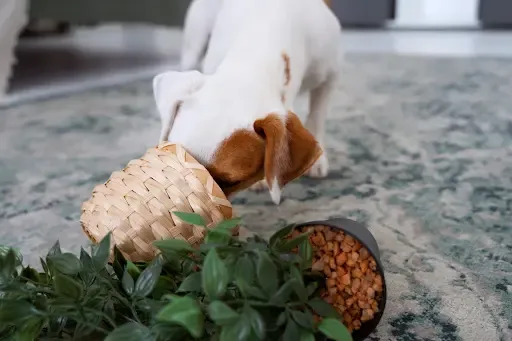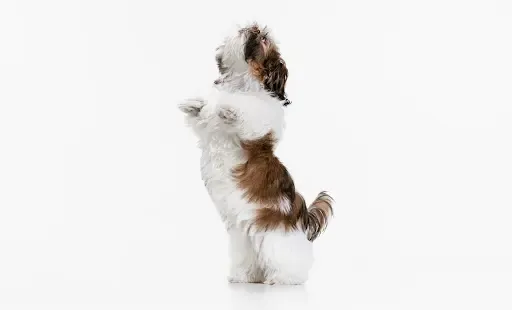Training your canine companion is a journey that enriches both your lives. It’s about more than just obedience; it’s a powerful way to build trust, strengthen your bond, and ensure your dog’s safety and well-being. From basic manners to impressive tricks, the things you can train a dog to do are vast and varied. Starting with fundamental commands and gradually progressing to more advanced skills will make the process enjoyable and rewarding for both of you. This comprehensive guide will explore essential commands and engaging tricks, providing you with a roadmap to cultivate a well-behaved and happy dog.
Why Teaching Your Dog is Essential
Beyond the immediate benefits of a well-behaved pet, dog training offers crucial advantages for their safety and your peace of mind. A dog that understands and responds to commands is safer in public, less prone to anxiety, and more integrated into family life. Furthermore, engaging in training exercises provides vital mental and physical stimulation, preventing boredom and potential behavioral issues.
Essential Training Tools
Successful dog training often relies on consistent positive reinforcement. Having the right tools can make the process smoother and more effective, ensuring your dog associates training with positive experiences.
- A Clicker: This small device provides a distinct sound marker that precisely tells your dog exactly what behavior earned them a reward. The click acts as a bridge, communicating intent clearly. Every click should immediately be followed by a treat.
- Dog Treats: High-value treats are indispensable in positive reinforcement training. Dogs are highly motivated by food, and offering a delicious treat immediately after they perform a desired action reinforces that behavior, making them more likely to repeat it.
Fundamental Skills: Basic Commands Every Dog Should Know
Starting with foundational commands lays the groundwork for all future training. These basic obedience skills are not only easy to teach but are crucial for your dog’s safety and integration into various environments.
Come
“Come” is arguably one of the most vital commands. It’s essential for recall, especially when your dog is off-leash, and can prevent them from encountering dangerous situations.
To teach “come,” start by capturing your dog’s attention with a treat or a favorite toy. When they look at you, give the command “come” in a clear, encouraging voice. As they begin to move towards you, offer praise enthusiastically and give them the treat once they reach you. If your dog is hesitant, you can use a leash to gently guide them closer. Consistent practice, even when not on a leash, will build a reliable recall.
Sit
The “sit” command is incredibly versatile, useful for everything from greeting visitors politely to waiting calmly before meals.
Begin by holding a treat above your dog’s head, slowly moving it back towards their tail. As their nose follows the treat, their hind end will naturally lower into a sitting position. The moment their bottom touches the ground, say “sit,” offer immediate praise, and give them the treat. Repeat this sequence consistently until your dog sits reliably on command.
Stay
 Well-behaved dog practicing the stay command
Well-behaved dog practicing the stay command
“Stay” is a critical command for safety, preventing your dog from bolting into dangerous areas like a busy street. It teaches impulse control and patience.
Have your dog in a “sit” or “down” position. Extend your hand, palm facing your dog, and clearly say “stay.” Take a single step back. If your dog remains in place, return to them, praise, and give a treat. Gradually increase the distance and duration before rewarding. Dogs can be easily distracted, so ongoing practice is key, even after they seem to have mastered it. Patience and consistency will help your dog become a pro at staying put.
Potty Training
Potty training is often one of the first and most important skills you’ll teach a new dog or puppy. Consistency is paramount.
Establish a regular potty schedule, taking your dog out at fixed times daily – first thing in the morning, after meals, before bedtime, and after waking from naps. Always take them to the same spot. When they relieve themselves outside, offer immediate praise and a high-value treat. Accidents indoors will happen; never punish your dog for them. Instead, calmly clean up the mess and reinforce appropriate outdoor behavior. Positive reinforcement is crucial for effective potty training.
Lay Down
The “lay down” command is excellent for calming an over-excited dog and is a foundation for many other tricks.
Start with your dog in a “sit” position. Hold a treat in your hand and move it slowly from their nose down to the floor, then slide it away from them along the ground. As they follow the treat with their nose, they will naturally lie down. The moment they are fully down, say “lay down,” praise them, and give the treat. With consistent practice, your dog will quickly learn to lie down on command.
Quiet
Teaching your dog the “quiet” command can bring much-needed peace, especially in public settings or at home when excessive barking becomes an issue.
To teach “quiet,” first identify what makes your dog bark (e.g., doorbell, another dog). Allow them to bark a few times, then hold a high-value treat to their nose. Most dogs will stop barking to sniff the treat. The instant they are quiet, say “quiet,” praise, and give the treat. Gradually increase the duration of silence required before the reward. You can also teach an “on cue” bark (e.g., “speak”) first, then use it as a trigger before asking for “quiet.”
Let Go
“Let go” is a vital safety command, allowing you to retrieve potentially harmful items from your dog’s mouth or to disengage them from something they shouldn’t have.
Start with your dog holding a low-value toy. Offer a high-value treat or another exciting toy. As they drop the first item to take the second, say “let go” and praise them. Repeat this, gradually increasing the value of the item they are letting go of. You can also practice by having them hold a leash. When you say “let go,” they should release it. Always reward immediately for compliance. For more ideas on developing these core skills, consider exploring different things to train your dog.
Beyond the Basics: Engaging Tricks and Advanced Commands
Once your dog has mastered the fundamentals, you can delve into more complex and entertaining tricks. These not only impress but also provide excellent mental stimulation.
Find
 Dog enthusiastically following a find command
Dog enthusiastically following a find command
The “find” command encourages your dog to use their sense of smell to locate specific objects, offering a fun mental workout and preventing them from getting into things they shouldn’t.
Begin by letting your dog watch you hide a visible treat or a favorite toy in a nearby, easy-to-find spot. Say “find it!” and encourage them to go get it. When they succeed, offer enthusiastic praise and an additional treat. Gradually increase the difficulty by hiding items in less obvious places, in different rooms, or out of their sight.
Open & Close Doors
Teaching your dog to open and close doors can be a useful and impressive trick. It requires patience and breaking the task into small steps.
Start by teaching your dog to target a stick or a piece of cloth attached to the doorknob. Reward them for touching it with their nose or paw. Then, encourage them to tug or push on it. For opening, you might lure them to pull a rope attached to the handle. For closing, lure them to push the door shut with their nose. Reward each successful step until they can perform the full action on command.
Give Paw
“Give paw” is a classic, charming trick that is relatively simple to teach.
Have your dog sit in front of you. Hold a treat in your closed fist. When your dog paws at your hand to get the treat, open your hand, say “give paw,” and give them the treat. Repeat until they offer their paw consistently. Then, you can introduce the verbal command before they paw, and they’ll associate the action with the word.
Hi-5
Similar to “give paw,” “hi-5” is a playful trick that builds on the same principle but with a slightly higher action.
Once your dog understands “give paw,” position your hand higher, more like a high-five gesture. Lure them with a treat to reach higher with their paw. As their paw touches your hand in the “hi-5” position, say “hi-5,” praise, and treat. Consistent practice will help them understand the difference between “give paw” and “hi-5.”
Jump
 Dog performing a controlled jump for a treat
Dog performing a controlled jump for a treat
Teaching your dog to jump (in a controlled manner) can be a great way to expend energy and have fun.
Hold a high-value treat above your dog’s head, just out of reach. Encourage them to jump up to get it. The moment their paws leave the ground, say “jump,” and give them the treat as soon as they land. Start with small jumps and gradually increase the height, perhaps by using your arm or a low obstacle. Always ensure the jump is safe and controlled. For other engaging activities, check out these 7 best and easy dog tricks for beginners.
Fetch
Fetch is an excellent game for both physical and mental stimulation, helping to build muscle and strengthen your bond.
Start with a lightweight toy. Throw it a short distance and encourage your dog to chase it. When they pick it up, call them back to you. If they bring it, praise enthusiastically and offer a treat or another throw. If they don’t, gently guide them back with the toy. You might need to teach “drop it” (similar to “let go”) to get them to release the toy at your feet. Gradually increase the throwing distance as they improve.
Play Dead
“Play dead” is an impressive trick that requires your dog to lie down and roll onto their back.
First, ensure your dog knows “lay down.” Once they are down, hold a treat near their nose and slowly move it towards their shoulder, prompting them to roll onto their side and eventually onto their back. As they roll, say “play dead,” and reward them immediately when they are on their back. Practice this in short sessions until they respond consistently.
Speak
The “speak” command trains your dog to bark on cue, which can be useful for alerting you to things or simply for fun.
Provoke a bark (e.g., knock on a door, ring a bell, or show them a treat then pull it away slightly). The instant they bark, say “speak,” praise, and give them a treat. Repeat this several times. Once they consistently bark when you say “speak,” you can phase out the trigger and just use the verbal command.
Roll Over
“Roll over” is another fun trick that demonstrates your dog’s flexibility and understanding of body commands.
Start with your dog in a “lay down” position. Hold a treat near their head and slowly move it in an arc over their shoulder, continuing towards their tail. Your dog should follow the treat with their nose, causing their body to roll over onto their back. As they complete the roll, say “roll over,” praise, and give the treat. Practice regularly to perfect the movement.
Left/Right
Teaching “left” and “right” helps guide your dog precisely, especially useful in crowded areas or when navigating obstacles.
Begin during walks. When you turn left, say “left” and reward your dog if they follow. Do the same for “right.” You can also use a treat to lure them in the desired direction while giving the command. Consistent repetition during walks will help them associate the words with directional changes, keeping them safe in busy environments.
Guard
The “guard” command is an advanced skill that should only be taught by experienced trainers and typically involves teaching a dog to alert or protect a specific item or person. This isn’t about aggression but about watchful behavior.
This command requires careful, positive reinforcement, teaching the dog to stay near an object or person and alert you to strangers, without displaying aggression. Reward your dog with plenty of adult training treats for their vigilance and controlled behavior, ensuring they understand the boundaries of this command.
Integrating Play and Communication in Training
Training shouldn’t always feel like work. Integrating play and clear communication into your routine enhances learning and strengthens the human-animal bond. These additional skills focus on interaction and communication.
Play
Playing is a crucial part of a dog’s life, providing both mental and physical enrichment. It’s also an excellent way to bond and can be used as a positive reinforcement tool during training sessions.
Ensure you use appropriate and safe toys. Playing games like tug-of-war (with rules), hide-and-seek, or even just chasing a ball not only tires your dog out but also reinforces good behavior when combined with commands like “drop it” or “come.” Playing can also be a fantastic way to socialize your dog with other pets and people. After an energetic play session, rewarding your dog with delicious crunchy dog treats from Dogsee is a great way to end on a positive note. Exploring fun and easy tricks to teach your dog through play can make learning even more enjoyable.
Ring the Bell
This command helps your dog communicate their need to go outside, effectively solving one of the common challenges of dog ownership.
Hang a bell on the doorknob leading outside. Each time you take your dog out to potty, gently tap their paw against the bell and then immediately open the door. When they relieve themselves outside, praise them and offer a treat. Eventually, your dog will associate ringing the bell with going outside to potty, giving you a clear signal of their needs.
Conclusion
Embarking on the journey of training your dog as early as possible offers immense rewards. Not only does it simplify daily life, but it also fundamentally enhances your dog’s safety, confidence, and overall well-being. Dogs that master basic commands are better equipped to navigate the world, less likely to encounter dangers, and more deeply integrated into their families. As your furry friend progresses through fundamental skills, you can joyfully introduce more advanced commands and playful tricks, further enriching their lives and strengthening your unique bond. A well-trained dog brings countless benefits, fostering a harmonious and joyful companionship.
